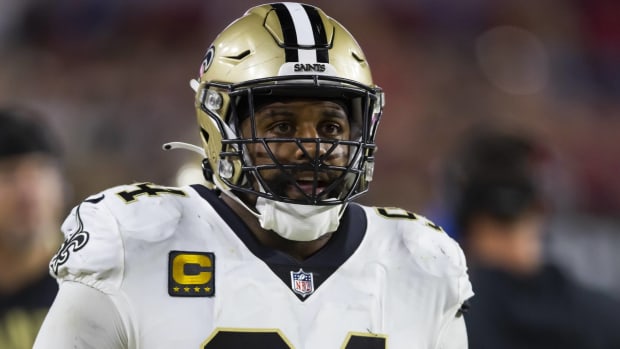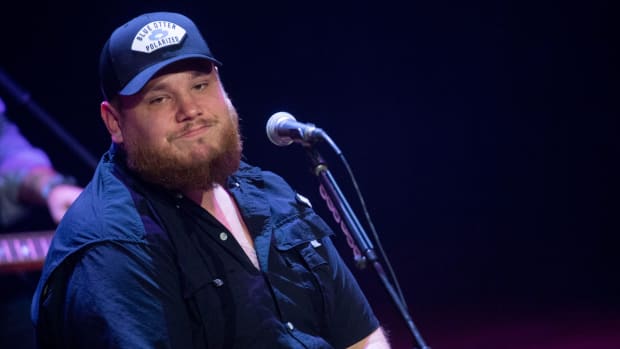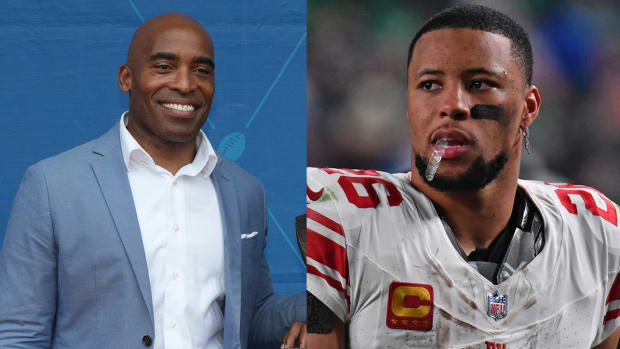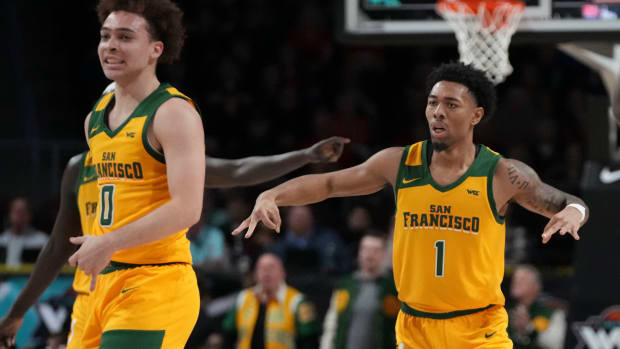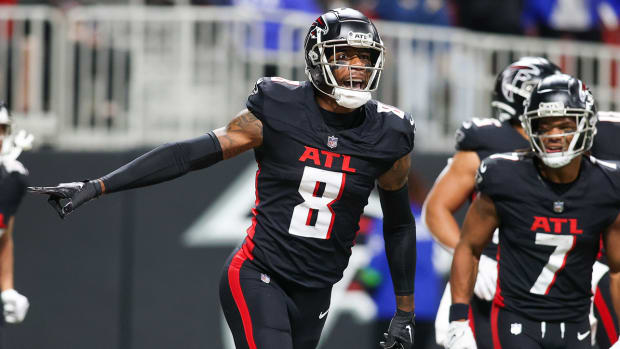
Jim Ross, Josh Barnett honor G1 Climax’s 25th anniversary
The WWE did not decide to sign AJ Styles and ShinsukeNakamura overnight. In fact, the seed was officially planted last August during New Japan Pro Wrestling’s G1 Climax.
“Winning the G1 in New Japan is similar to winning the Royal Rumble in WWE,” said Jim Ross, who serves as the voice of New Japan Pro Wrestling every Friday night on AXS TV. “It gets you a main event shot in the biggest event of the year, which is Wrestle Kingdom in New Japan.”
Ross believes WWE officials were closely watching last year’s G1, which led to four talents–Styles, Nakamura, Karl Anderson and Luke Gallows–leaving New Japan and signing with WWE this past January.
“On the heels of that 2015 G1 Climax tournament, you saw WWE hire four of their top guys,” continued Ross. “I know a lot of guys at WWE who watch the show at AXS, and the guys who came to WWE in ‘16 were largely perceived based off their run in ‘15.”
Styles and Nakamura both dazzled in the G1, which is a four-week, 20-man round robin tournament held every August. There are two tournament brackets, and the two bracket winners–which is based off a point system with two points for a win, one point for a draw, and zero for a loss–face off in the finale.
“All of those players are still in place in the 2015 G1,” explained Ross. “Nakamura hasn’t left, AJ Styles is still there, and Gallows and Anderson are still there.”
Just before the G1 Climax turns 26 years old this August, AXS TV is shining a light on the 2015 tournament. Beginning tonight at 8pm ET, AXS presents ten episodes highlighting last year’s tourney with commentary from NJPW duo Jim Ross and Josh Barnett.
“The G1 is a very serious deal,” said Barnett, who is one of the toughest heavyweights in the world with a 34-8 MMA record. Barnett also competed with New Japan, but regrets his missed opportunity in the G1. “I injured my shoulder and missed my chance to be in the one G1 Climax. I was incredibly disappointed. I vied for the IWGP heavyweight title, but I didn’t get a chance to be in the G1.”
The modern-day G1 kicked off in 1991, which was the first of a record five victories by the legendary MasahiroChono.
New Japan legend Hiroshi Tanahashi wants Ring of Honor world title
“Winning a G1 is perhaps may even be more prestigious than winning the IWGP,” continued Barnett. “It’s one of the main attractions of New Japan Pro Wrestling, and brings out the best in people through the grueling aspect of that tournament. Sometimes new stars are born, or sometimes people don’t turn out to be who you thought–like when Chono completely turned his back on the fans after winning a G1 Climax. There was a whole sumo arena chucking pillows at the ring after that.”
New Japan takes pride in booking out lengthy storylines, and the G1 is a perfect example. The winner is crowned in August, yet the payoff does not occur until the following January.
“This is a major event, and I’m a tournament guy,” said Ross. “WWE, all the years I was there, was not. The King of the Ring faded and went away because upper-management doesn’t enjoy tournaments. The foundation of pro wrestling was built on episodic television, and tournaments are naturally episodic.”
Coverage kicks off tonight with three matches–Styles vs. KatsuyoriShibata, TetsuyaNaito vs. Bad Luck Fale, and eventual 2015 G1 winner HiroshiTanahashi vs. KotaIbushi.
“G1 was most important for me,” said Tanahashi, who is now a two-time G1 winner. “I wrestled many times, against Styles, ShinsukeNakamura, KotaIbushi, and others. I had many long matches, but that’s OK, because G1 gave me the chance to be champion. I am grateful for that chance.”
Tanahashi and Nakamura each won their respective brackets, and wrestling fans will also recognize some other familiar faces. Naito is the current IWGP title holder, while Ibuta is headed to NXT. Michael Elgin caught fire in the 2015 G1, and just signed a two-year contract with New Japan.
“I remember seeing Chono and [“Ravishing”] Rick Rude in the [1992] finals,” said Elgin about a match that saw Chono defeat Rude in 29-plus minutes to repeat as G1 winner. “The crowd reaction to it was surreal. Competing in the G1 was always something I wanted to do, and last year was amazing, and I’m really looking forward to this year’s, as well.”
Coverage for next week includes Tanahashi vs. Naito, which will allow fans a closer look into Naito’s evolution as one of the most dynamic characters in wrestling.
“We’re watching the evolution of Naito,” said Ross. “It’s really a unique journey he’s taken, but he’s the main guy. He’s really good, and once you understand his TV persona, he’s even that much more intriguing.”
Naito was pushed–similar to Roman Reigns–as the next New Japan superstar. He won the G1 in 2013, but–also like Reigns–fans never accepted him in the top position. New Japan officials turned him heel, and he is now one of the most over acts in the company.
Week in Wrestling: Rey Mysterio on Lucha Underground; Dalton Castle
“This new side of TetsuyaNaito is pretty fun to watch,” said Barnett. “I like his attitude out there, and I like the nastiness he’s bringing to the ring. It’s fun to watch.”
Through a translator, Naito explained the significance of the G1.
“America doesn’t have a G1,” said Naito, “but when I was a kid, I loved New Japan Pro Wrestling and I would watch the G1 Climax in the summer. Summer equaled the G1 for me.”
An integral part of Naito’s gimmick is that he is above the IWGP title. He drops it on the ramp during his entrance, and treats the belt with a complete and utter disrespect. Yet regardless of his feelings toward the title, he still holds the G1 in high regard.
“The IWGP title chases me,” said Naito. “Now I am IWGP champion and the best in the world, but I always dreamed of winning the G1. Now I have the number one belt in pro wrestling, and now I am the best.”
Ross explained that there is a significant difference between the style of wrestling between New Japan and WWE. The fundamental differences in philosophy, he explained, begin with wrestler’s finishers.
“No matter who you are–top babyface or top heel–anybody can lose to another top guy’s finish,” said Ross. “It’s believable, it makes sense–anybody can lose. You rarely a count-out or disqualification finish. You see finishes with something tangible. Those finishes have almost become obsolete with the knowledge of today’s fans. Fans deserve–and expect–winner and losers. The majority seem to know it’s a showbiz presentation, so why in the hell aren’t we giving them winners and losers?”
AJ Styles delivered his finisher–the Styles Clash–twice to Roman Reigns in the main event of Extreme Rules this past Sunday, yet he failed to win the match. Chris Jericho has also kicked out of Styles’ allegedly vaunted finishing maneuver, which was not the case in Japan.
“The finish of your match is a lot more logical if the fundamental tenants of basic booking are applied, and that is having a winner and a loser,” explained Ross. “You should lose to the other guy’s finish–it should take the very best the other guy had to beat him. You want to lose to the guy’s best stuff–not some roll-up or small package.”
Another difference between WWE and New Japan is the fighting style both in and out of the ring.
“You rarely see a clenched fist in New Japan,” continued Ross. “There are a lot of power strikes and a lot of forearms, but very few clenched fists–and I love that because it doesn’t expose the business. How could one man get repeatedly hit in the face by another man’s fists and never leave any DNA? How is there never a black eye, bloody nose or busted lip from this plethora of clenched fists we see in North American wrestling? It’s overlooked–but not in New Japan.
Quiz: Can you pick the '90s wrestling superstar from a random fact?
“Then when you see someone use a clenched fist, it’s a big deal. It’s the same with outside the ring. They have a 20-count and can logically do things on the outside that are destructive and impactful and still make it back to the ring without it being a stretch. American referees use a 10-count, and it’s like they hang on eight for an hour. It just takes you out of the moment.”
The manner in which New Japan books the G1 is indicative of the way the company plans out all of their major angles, as significant time is devoted to allow feuds to reach their maximum potential.
“Somebody said to me, ‘I can’t believe the WWE didn’t do a better job of promoting Alberto Del Rio after he beat John Cena,’” said Ross. “That’s an interesting point–the top guy loses, and it wasn’t a fluke deal–Alberto beat Cena, and it was a great win–but it went nowhere. There is a logic in the New Japan booking where they plan long-term. I love the product, it’s very much reminiscent of a Bill Watts-produced product or the NWA in the 80’s. It’s very physical and very sound fundamentally.”
As one of the most famous broadcasters to ever don a headset, Ross admitted that AXS TV has provided him with a refreshing approach to broadcasting with a singular focus on the match and enhancing the work.
“I just call the matches,” explained Ross. “That’s my job. I call what I see, I document it, and put it in a story form. The stories are told, the talent is embellished, the reasons for wrestling are clearly described and the story is about the music that is being written by the talent. The executives at AXS said, ‘You’re the play by play guy–this is your show to do. Don’t worry about what’s trending–call what you see.’ I’m not knocking other broadcasters, that’s just how they are produced. So fans should never get mad at Michael Cole, Kevin Kelly, Josh Mathews or Matt Striker or anybody else–they’re just doing what they’re told.
“As a broadcaster, you’re still incumbent to the appropriate lyric you’re hearing, or seeing in this case. Fortunately, that’s what AXS TV wanted, so my job is to make this as good as I humanly possibly can and make you forget this is showbiz and get lost in the athletic elements of the match. I really believe that all of today’s pro wrestling product would be greatly enhanced if it had more of a sports feel than a campy, sophomore drama class.”
Each AXS TV broadcast over the next six weeks will feature at least one match in full, along with abridged versions of other matches, and even includes double-premieres on June 3, 17, 24 and July 1.
“This is the best wrestling going on in the world,” Barnett. “New Japan is the best product in professional wrestling right now because they have the best talent. The guys hitting the ring are actual, bona-fide wrestlers. They’re not glorified choreographers, they’re not sports entertainment.
Barnett was not surprised that WWE was interested in talent from the New Japan roster.
“I don’t think it’s a coincidence in the least that the WWE went out and yanked some of the top talent straight out of the company right after our show started [on AXS],” said Barnett. “And it’s one thing to say wrestlers change places all the time, but they even took the one commentator that they could legitimately take, and that was Mauro [Ranallo]. I’m still under the UFC contract, so they couldn’t come out and vie for my services in the same manner, but with Mauro, they could. He was seen as the number one broadcaster in wrestling last year, and the interest from that did not fall on deaf ears in the WWE office. And I’m proud for Nakamura, Styles, Gallows and Anderson. Nakamura could work a program anywhere in the world, and now he’s getting an opportunity on the biggest stage possible.”
Indie wrestling stars the Young Bucks are ready for anything, even the WWE
The 38-year-old Barnett defeated Roy Nelson in the Octagon in 2015 before a submission loss to Ben Rothwell this past January. Although the former UFC heavyweight champion does not have a date set for his next fight, he admitted that he is seriously considering returning to New Japan. If he ever re-entered the ring, Barnett admitted, he would love for it to be for the G1.
“If I was to come back and get back into a healthy wrestling schedule again, New Japan is the place where I would do it,” said Barnett. “I would relish the idea of matching up with some of New Japan’s top talent. There are guys who were young boys, but have now come into their own, and I want to see what it’s like to get in there with them now that they’ve had their time to mature.”
Both Ross and Barnett are eager for the opportunity to return to Japan and call the action from ringside.
“Josh and I would love the opportunity to go to Japan and do the G1 live,” said Ross. “If we could call it live, we’d be there in a heartbeat.”
The AXS schedule really heats up in June and July, as the June 24 edition features ShinsukeNakamura vs. KazuchikaOkada, and July 1 is appointment viewing as Kushida defends his IWGPJr. Heavyweight Championship against Ricochet; and redDRagon’s Kyle O’Reilly and Bobby Fish meet the Young Bucks for the IWGPJr. Tag Championship.
“Kushida borrowed money from his mom to help launch his career,” said Ross. “This business has no guarantees, but he has a really heartwarming story. But if someone had said to me, ‘What do you think about a guy doing a Marty McFly, Back to the Future gimmick?’ I would have said, ‘Are you kidding me? It’s too outdated,’ but he’s made it work.
“That’s like someone coming up to me back in the day and saying, ‘How would you like to hire a six foot, two-hundred pound woman and make her a member of DX and a very vital part of ‘The Attitude Era’?’ I just wouldn’t have been able to visualize that, but then you see Joanie [“Chyna”Laurer]–and you say, ‘Now I get it.’ It’s the same way with this kid–it fits Kushida so well. Fans want to see great, and Kushida is great. It’s like being able to forecast what a young JushinLiger did back in the day, then follow it through on the journey–and Kushida is going to be a vital part of what they’re doing on a big picture level for years to come.”
Ross is grateful to call wrestling again every week, and his move to AXS has served as a reminder of how much he genuinely loves the business.
“I watch a lot of wrestling, I still consume a lot of the product,’ said Ross. “I’m still a fan. I can get tell you that I get tuned out and turned off when wrestling announcers are talking about everything but what I’m seeing. How do you not get disconnected? But the New Japan stuff, week in and week out, they are fundamentally and philosophically sound on winners and losers.
“Their fundamental in-ring skills are very competitive with anybody in the world, WWE included. They have an old-school pacing, and fundamentally sound in the sense of how you apply holds. I detest the term, ‘Grabbing a hold’–that reeks of work and illusion, but applying a hold is reality-based, and it’s important not to allow your verbal presentation as a broadcaster to cause a disconnect with the viewer. They’re really good at pacing, and they don’t do too much that you can’t process what you’ve seen. They can create the emotion that was intended–if you work so fast, and everything is bump-bump-bump, then what are people processing? Too many punches means your opponent doesn’t know which one to sell–the first one? The third one? The eighth one? The pacing is good but the selling is great.”
Ross explained that selling–whether that means selling for an individual move or an injury–is vital to the success of the business.
“If you don’t sell in pro wrestling, you’ve basically eliminated the heartbeat of the match,” explained Ross. “The match is about angst and jeopardy and getting in trouble and fighting out of it. The finish is only three seconds long, and certainly the finish needs to be impactful, but the journey to get to the finish needs to be spot-on. It’s impossible to get there without the selling, which has many dimensions, levels, and nuances.”
Ross and Barnett both stated they plan on working to become the top broadcast team in wrestling, and a major piece of their philosophy, Barnett explained, is their approach to each broadcast.
“Wrestling is a real sport and should be treated as a real athletic competition,” said Barnett. “There is actual lineage to real fighting and submission wrestling. If you remove the idea of it being real, you really undermine its ability to be as effective and capture the people’s attention. We want to give wrestling that real, honest, true combative aspect, and treat it legitimately and seriously.”
As AXS TV’s NJPWG1 Climax 25 turns the key and starts tonight, Ross can no longer wait to share his excitement.
“We’re coming back in a powerful way,” said Ross. “There are ten shows coming up, and I’ve done a lot extra prep and I’m ready to roll. We are really going to highlight the G1.”
Justin Barrasso can be reached at JBarrasso@gmail.com. Follow him on Twitter @JustinBarrasso.




